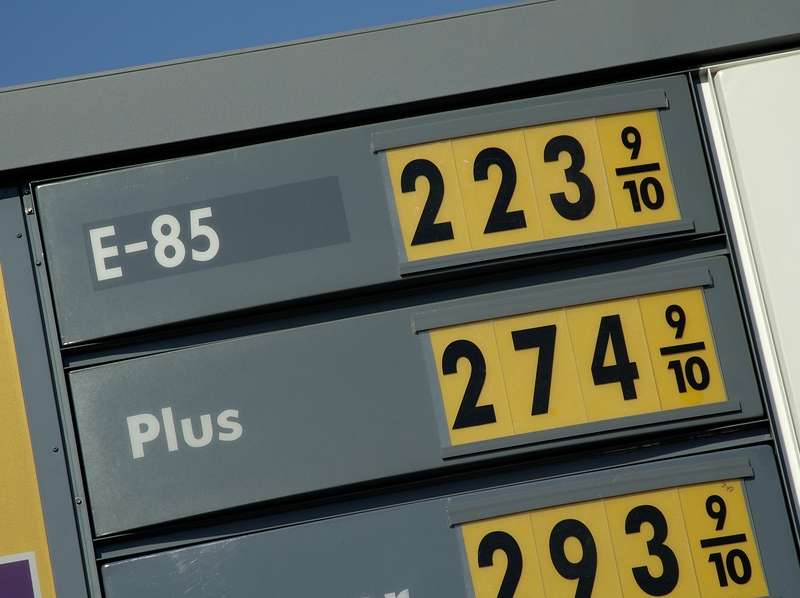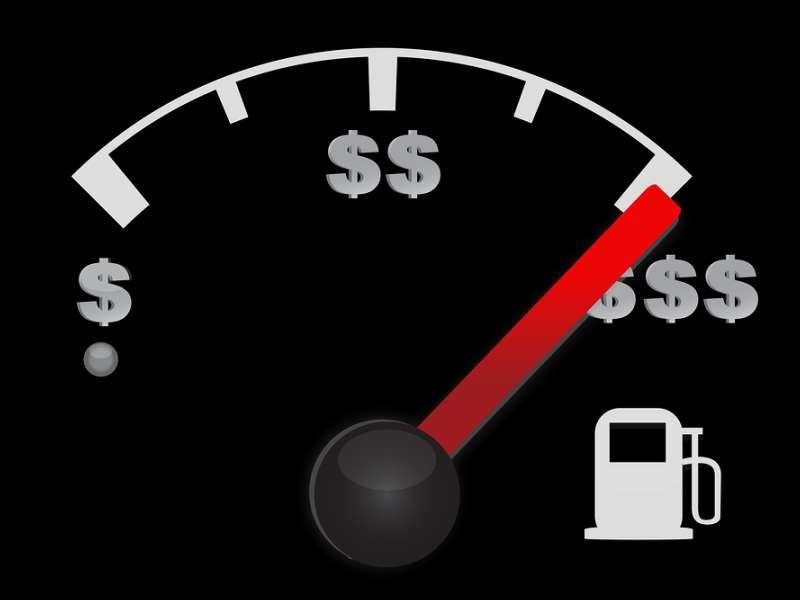Recent Articles
Popular Makes
Body Types
What Is Flex Fuel?

Flex Fuel plays an interesting dual role on the modern automotive landscape. On the one hand, it is lauded as a viable alternative to the traditional engine designs that have long ruled the roost, one that provides the potential to reduce the environmental impact of American motorists and lower the dependence on foreign oil imports. On the other, Flex Fuel is vilified by those who say that its environmental costs are simply harder to measure and easier to gloss over when compared against standard gasoline. Either way, Flex Fuel cars have been on the market for close to a decade, and show no signs of leaving the scene any time soon.
Let's take a closer look at Flex Fuel and explore the key points to understanding this form of alternative energy.
What Is Flex Fuel - 01 - Flex Fuel Is Ethanol-Blended Gasoline
Flex Fuel is not entirely divorced from gasoline as a fuel source. In fact, Flex Fuel is actually a blend of standard gasoline with ethanol, which is a type of alcohol. Is it possible to run an engine entirely on ethanol? The short answer is yes, although as you'll see later on there are a few caveats. Why include gasoline at all, then? The main reason that gasoline is included as a part of Flex Fuel is that ethanol doesn't offer enough vapor pressure to ignite in an engine that has been chilled by winter temperatures, requiring the extra push from gasoline to get started and operate efficiently.

What Is Flex Fuel - 02 - Flex Fuel Is Also Known As E85
Flex Fuel goes by a number of names, but the most common is E85. The term 'E85' is actually a very straightforward interpretation of the composition of Flex Fuel, which is 85 percent ethanol and 15 percent gasoline. As mentioned above, the use of gasoline in Flex Fuel is to help with engine ignition, but there are times when the temperatures drop to the point where even 15 percent gas isn’t enough to keep a Flex Fuel motor running properly. During the harshest winter months, Flex Fuel actually dilutes to E70, which is 70 percent ethanol and 30 percent gasoline. Gas stations won't change their labeling, however, so any E85 stickers that might have already been there stay in place year round.

What Is Flex Fuel - 03 - Flex Fuel Depends Primarily On Corn
You might be wondering whether Flex Fuel simply trades a dependency on oil for a dependency on ethanol. The key difference when evaluating these two fuel sources is the understanding that the majority of the ethanol used in Flex Fuel in the United States is derived from a biological source: corn. Since corn is a major crop in America, and can be planted and replanted again and again (unlike oil deposits, which will eventually run out), ethanol is considered a renewable resource. America isn't the only nation to embrace ethanol - Brazil also has a very high level of ethanol use and production.

What Is Flex Fuel - 04 - Flex Fuel Is Controversial
While corn-based Flex Fuel might seem like an environmentally-friendly option, there are a few issues surrounding this type of alternative energy. The first is that most farmers who grow corn for ethanol do so due to government subsidies that make it more profitable than other types of crops. Without this support, it's debatable as to whether ethanol would survive as a fuel source on the open market. Dedicating so much land to growing corn for fuel also reduces the amount of agricultural resources devoted to the nation's food supply, and the monoculture it encourages can also negatively impact the yield and viability of land over the course of time.

What Is Flex Fuel - 05 - Flex Fuel Is Typically Cheaper Per Gallon Than Straight Gasoline
What is the biggest advantage of using Flex Fuel? Cost. Flex Fuel costs roughly 10 percent less than 87 octane gasoline by the gallon, which is what typically appeals to those considering a Flex Fuel automobile. Keep in mind, however, that Flex Fuel availability varies from state-to-state, which means that it's not always easy to track down a gas station that will keep you running on ethanol. Typically, it's easier to locate Flex Fuel in corn-growing states such as those found in the Midwest. There are just over 2,000 Flex Fuel-friendly stations in the United States.

What Is Flex Fuel - 06 - Flex Fuel Does Not Improve Fuel Mileage
If Flex Fuel is cheaper, grown locally, and available across a reasonable swath of the nation, then why doesn't everyone use it? It's simple, really: Flex Fuel engines aren't as efficient as gas-only engines. The reason comes down to simple physics, as a gallon of E85 fuel contains almost 30 percent less energy when compared against a gallon of gasoline. As a result, Flex Fuel vehicles tend to eat up whatever cost savings might be realized at the pump by way of using more E85 to travel a given distance when contrasted with the same model of gasoline-powered automobile.

What Is Flex Fuel - 07 - Not All Cars Can Run On Flex Fuel
You can't run Flex Fuel in just any engine - it has to be specially prepared, or even designed, to handle the high ethanol content of E85 fuel. This is primarily because ethanol is highly corrosive to certain materials used in a vehicle's fuel system, such as rubber. Specially resistant parts are part and parcel of a Flex Fuel vehicle, and these automobiles also come with unique ECU programming and additional sensors in order to reduce the chance of knock and maximize the amount of energy that can be squeezed out of a gallon of E85.

What Is Flex Fuel - 08 - How Can You Tell If You Own A Flex Fuel Car?
Almost all Flex Fuel vehicles are very clearly labeled as such. Some of them have a small badge or a sticker on their exterior, but on certain models you need to know where to look in order to discover whether they are Flex Fuel-compatible. Since 2008, most car companies have been giving their Flex Fuel vehicles yellow gas caps, as well as including a sticker on the inside of the fuel door that indicates whether they can be filled up with E85 or not. You can also look inside the owner's manual for the definitive last word on Flex Fuel capability. Ford and General Motors lead the market in producing Flex Fuel automobiles, which are all capable of running straight gasoline instead of E85 if none is available.
